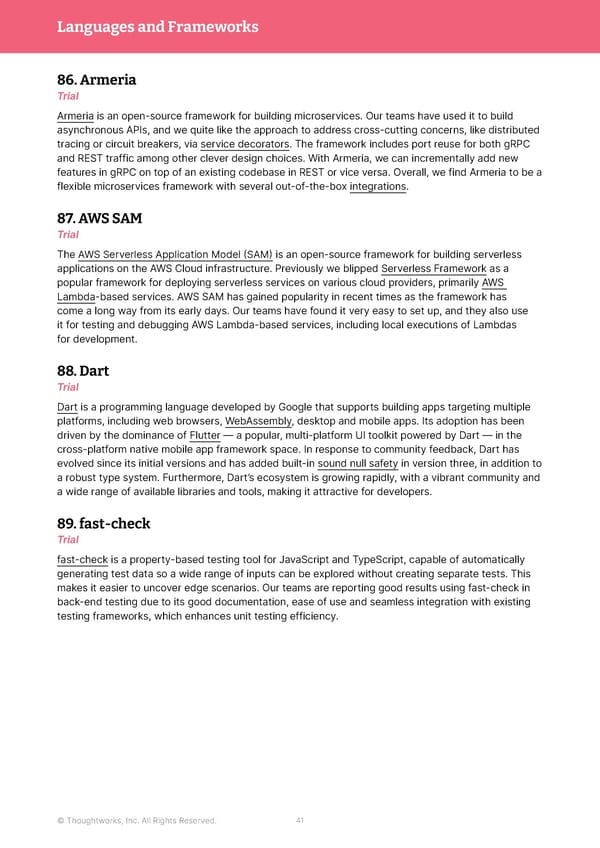Languages and Frameworks 86. Armeria Trial Armeria is an open-source framework for building microservices. Our teams have used it to build asynchronous APIs, and we quite like the approach to address cross-cutting concerns, like distributed tracing or circuit breakers, via service decorators. The framework includes port reuse for both gRPC and REST traffic among other clever design choices. With Armeria, we can incrementally add new features in gRPC on top of an existing codebase in REST or vice versa. Overall, we find Armeria to be a flexible microservices framework with several out-of-the-box integrations. 87. AWS SAM Trial The AWS Serverless Application Model (SAM) is an open-source framework for building serverless applications on the AWS Cloud infrastructure. Previously we blipped Serverless Framework as a popular framework for deploying serverless services on various cloud providers, primarily AWS Lambda-based services. AWS SAM has gained popularity in recent times as the framework has come a long way from its early days. Our teams have found it very easy to set up, and they also use it for testing and debugging AWS Lambda-based services, including local executions of Lambdas for development. 88. Dart Trial Dart is a programming language developed by Google that supports building apps targeting multiple platforms, including web browsers, WebAssembly, desktop and mobile apps. Its adoption has been driven by the dominance of Flutter — a popular, multi-platform UI toolkit powered by Dart — in the cross-platform native mobile app framework space. In response to community feedback, Dart has evolved since its initial versions and has added built-in sound null safety in version three, in addition to a robust type system. Furthermore, Dart’s ecosystem is growing rapidly, with a vibrant community and a wide range of available libraries and tools, making it attractive for developers. 89. fast-check Trial fast-check is a property-based testing tool for JavaScript and TypeScript, capable of automatically generating test data so a wide range of inputs can be explored without creating separate tests. This makes it easier to uncover edge scenarios. Our teams are reporting good results using fast-check in back-end testing due to its good documentation, ease of use and seamless integration with existing testing frameworks, which enhances unit testing efficiency. © Thoughtworks, Inc. All Rights Reserved. 41
 Thoughtworks Technology Radar Page 40 Page 42
Thoughtworks Technology Radar Page 40 Page 42